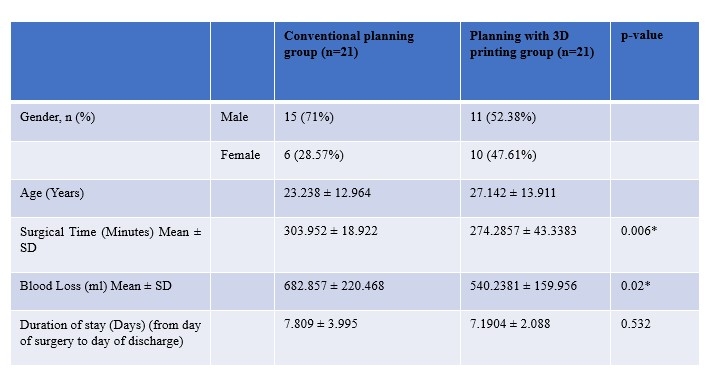Background: This study is based on Three-dimensional (3D) printing of the portal venous system of patients with extrahepatic portal vein obstruction (EHPVO) to assess the surgical outcome and its usefulness in the training of resident doctors.
Methodology: This retrospective study was performed on 42 patients of EHPVO who underwent shunt surgery from November 2018 to March 2023. The patients were divided into a conventional planning group based on MDCT imaging (n = 21) and a 3D printing group based on the 3D reconstruction of the portal venous system (n = 21).
The 3D image was reconstructed using D2P and Geomagic free form plus software. Segmented regions were combined to create 3D models. Surgical duration and blood loss were recorded during the operation. A close-ended questionnaire with a Cronbach’s ? of 0.7 was provided to the residents to assess the utility of 3D models in pre-surgical planning.
Results: The mean surgical time in planning with the 3D printing and conventional planning groups was 274.28 ± 43.33 min and 303.95 ± 18.92 min (P < 0.05). The intraoperative blood loss in planning with the 3D printing and conventional planning groups was 540.23 ± 159.95 ml and 682.85± 220.46 ml (P < 0.05). Forty residents completed the survey. Twenty-nine (96.66%) surgeons gave favorable responses (76% found it to be very helpful and 20% helpful).
Conclusion: Our study suggests that 3D printing technology is useful in aiding surgical planning and provides teaching materials for residents in learning surgery.
